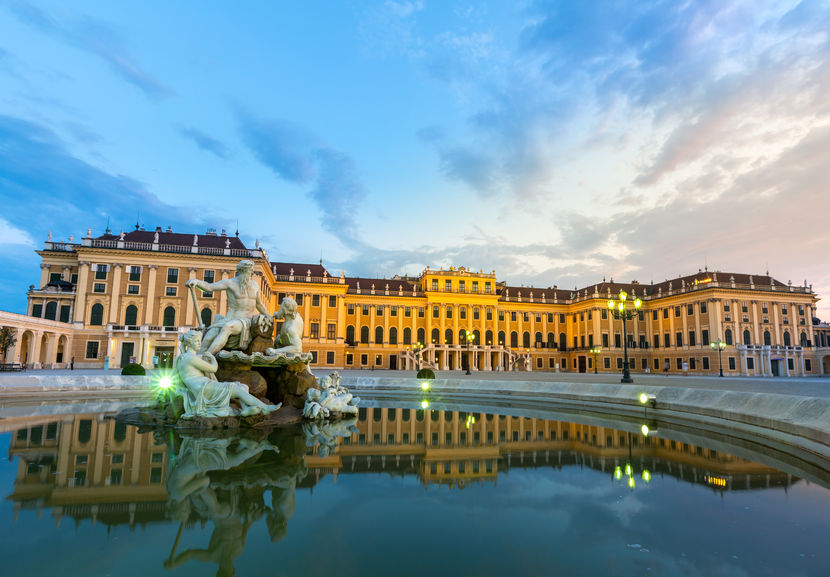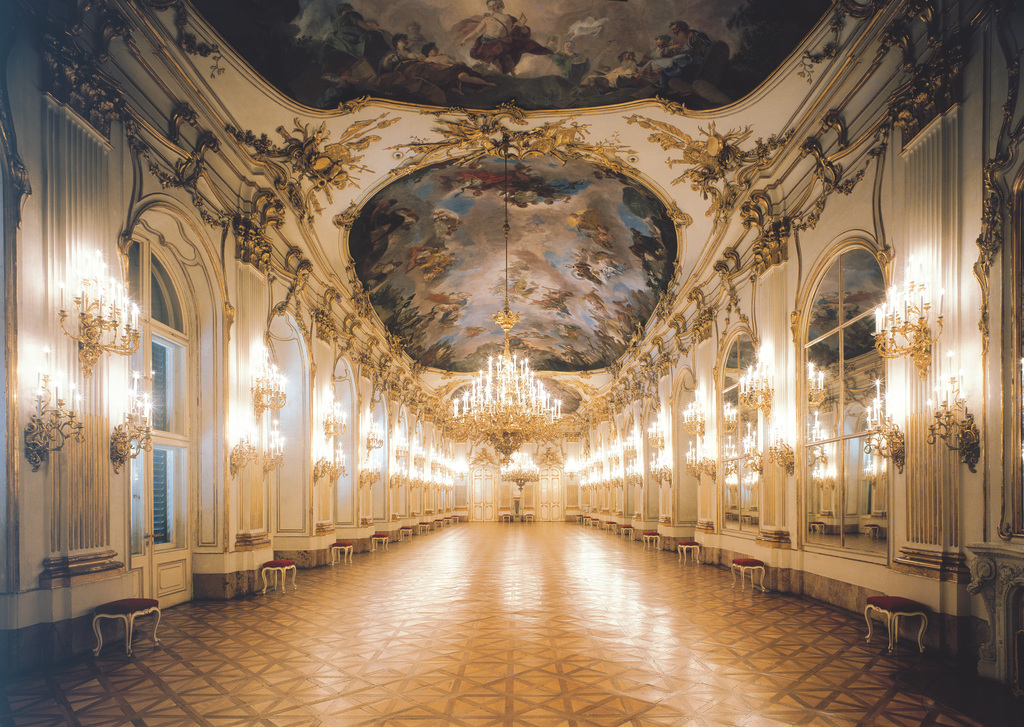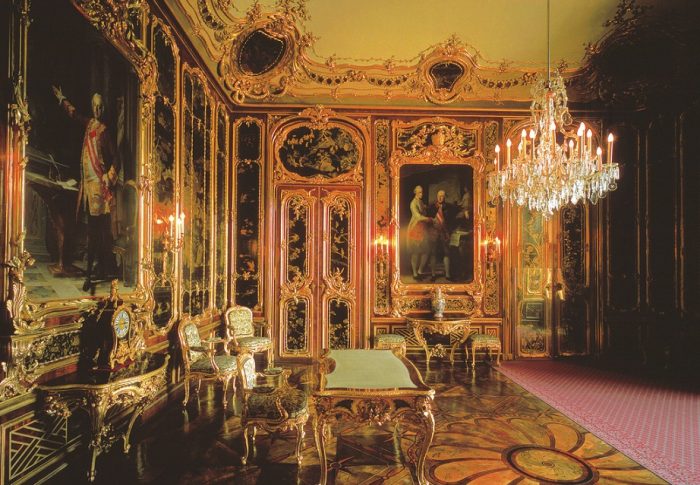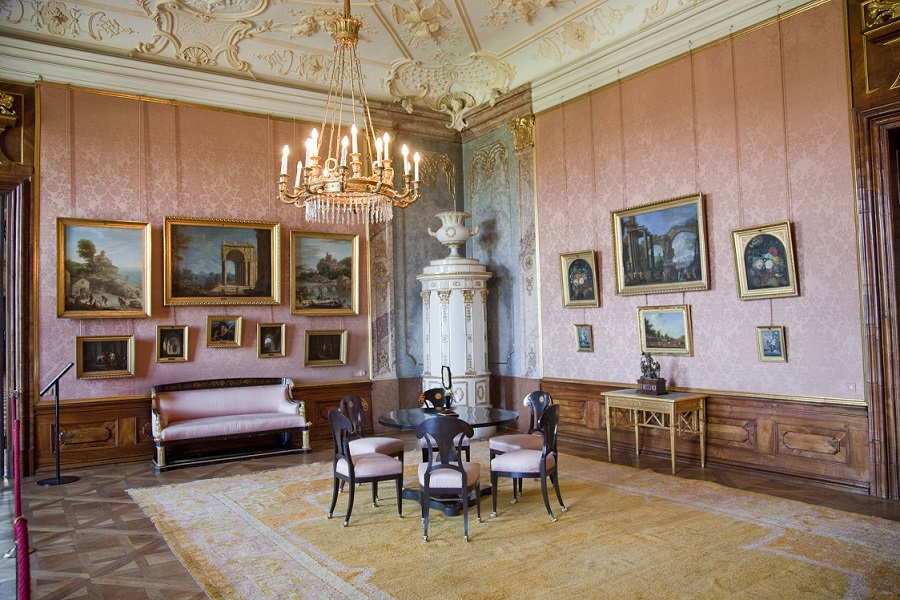An absolute sightseeing-must is the Schönbrunn Palace in Vienna. The magnificent summer residence of the imperial Habsburg family has preserved its splendor to this day. Here are the historical and human moments of several hundred years of ruling between the imperial walls.

The present park was a hunting ground during the time of the Habsburgs. The name of the castle is said to go back to a saying attributed to Emperor Matthias. In 1619 he saw an artesian well while hunting and said “What a beautiful fountain”.
After the death of Ferdinand II in 1637, the area became the widow’s residence of the wife Empress Eleonora of Gonzaga, which had a representative summer residence named “Schönbrunn” built. The first documentary mention from the year 1642 proves this name.
The building was devastated by the Turkish siege in 1683. Emperor Leopold I decided to build a new building for his successor to the future Emperor Joseph. The architect Johann Bernhard Fischer von Erlach came to the imperial court and built a new hunting lodge.
360 degree view:
Sie sehen gerade einen Platzhalterinhalt von Standard. Um auf den eigentlichen Inhalt zuzugreifen, klicken Sie auf den Button unten. Bitte beachten Sie, dass dabei Daten an Drittanbieter weitergegeben werden.
Mehr InformationenMaria Theresa had the castle and the park rebuilt into its present form. In the period from the middle of the 18th century until the end of World War I, the Baroque palace was the summer residence of the Austrian imperial family. A court, composed of several hundred employees, lived in the castle and took care of the entire facility.
Summer residence of the Austrian imperial family
The Great Gallery is the showpiece in the castle building and was mainly used for the festive recipients, ball events and as a boardroom. The walls are decorated with gilded rococo stucco and the ceiling of the hall is decorated with three large paintings.

Today, the hall can be admired during the day as part of the castle tours. In the evenings, it is still used as a venue for concerts and other events.
The Hall of Mirrors has been decorated with a magnificent white gold rococo decoration and crystal mirrors. In October 1762, the first concert of six-year-old Mozart took place in this or in the adjoining hall. The prodigy Mozart, whose father called Wolferl, performed before the Empress.
The Vieux Laque room was the study (Retirade) of Franz I Stephans, Duke of Lorraine (1729-1736), spouse of Maria Theresia:

The common bedroom of Franz I. Stephan and Maria Theresia is today known as Napoleonzimmer. The background to this is that Napoleon had his headquarters in the occupation of the city of Vienna in Schönbrunn Palace, presumably using this room as a bedroom.

Schönbrunn Palace and its magnificent park were declared UNESCO World Heritage Sites in 1996. However, the magnificent palace complex not only offers preserved beetles, trees and paths, following examples from the Baroque and Rococo periods. Apart from Irr-Garten and the Kronprinzen-Garten, the Palmenhaus and of course the Tiergarten Schönbrunn also want to be discovered.
Guided tours and tours of the castle
There are 1,441 rooms in Schönbrunn Palace, but only 45 of these rooms are open to the public for sightseeing. The Hall of Mirrors and the Red Salon, the Festival Hall and the bedroom of Emperor Franz Joseph are just a small selection. The spirit of history-steeped and today with numerous films and TV series considered Empress Elisabeth, better known as Sisi, is noticeable in the salon of the Empress or in the bathroom. Here the unfortunate and beautiful ruler spent hours every day looking after her outward appearance.
Sie sehen gerade einen Platzhalterinhalt von Standard. Um auf den eigentlichen Inhalt zuzugreifen, klicken Sie auf den Button unten. Bitte beachten Sie, dass dabei Daten an Drittanbieter weitergegeben werden.
Mehr InformationenOur tip: Schönbrunn Palace is the most visited attraction in Austria. We recommend planning the visit to the castle, park, Gloriette, Wagenburg, Schlosstheater, Tiergarten and Palmenhaus beforehand and book an online ticket in advance. To avoid waiting at the cash register.
Play like the Emperor kids.
Under the motto “imperial children” Schönbrunn Palace offers unforgettable experiences, especially for small guests: a children’s museum, imperial dressing up, puppet theaters or handicrafts are all part of the family program. Even children’s birthdays can be celebrated here, in front of historical Viennese scenery.
Arrival and location of the baroque palace
Address: Schönbrunner Schloßstraße 47, 1130 Vienna
Public accessibility: subway line U4, stop Hietzing or Schönbrunn; Tram line / Tram 10 or 58, stop “Schloss Schönbrunn”
Map:
Sie sehen gerade einen Platzhalterinhalt von Standard. Um auf den eigentlichen Inhalt zuzugreifen, klicken Sie auf den Button unten. Bitte beachten Sie, dass dabei Daten an Drittanbieter weitergegeben werden.
Mehr InformationenFurther information on the opening hours of the palace.



